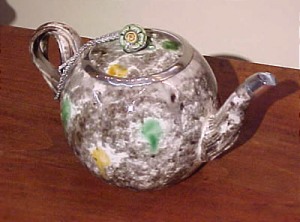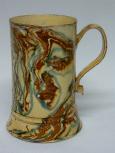 Lighting mentioned prior to 1775 [in particular the period between 1700 and 1775] includes: candles, torches, lamps, candles for burning in “lamps” or lanthorns, rush, splinters, etc. In 1704, Psalmanazar noted people of Formosa (now Taiwan) using links and torches made of pine trees for lighting, and the country people kindled straw or any kind of wood which would flame up and give light. Splinters cut from fir trees were greatly used by the common people of England for lighting.
Lighting mentioned prior to 1775 [in particular the period between 1700 and 1775] includes: candles, torches, lamps, candles for burning in “lamps” or lanthorns, rush, splinters, etc. In 1704, Psalmanazar noted people of Formosa (now Taiwan) using links and torches made of pine trees for lighting, and the country people kindled straw or any kind of wood which would flame up and give light. Splinters cut from fir trees were greatly used by the common people of England for lighting.
Exodus 27:20 addresses the use of lamps for light and the early fuel used in them. “You shall command the people of Israel that they bring to you pure beaten olive oil for the light that a lamp may regularly be set up to burn.” Other lamp fuels included fish oil, castor oil, sesame oil, and whale oil.
Pliny wrote of rush lights in the first century.
In 1765, Busching described lanthorns [lanterns] hung on lines tied across the streets were the method of lighting most cities, including Paris.
Baily wrote that candlesticks had a spike onto which the candle was placed and pressed down until about the thirteenth or fourteenth century when a socket was devised into which the candle could be thrust.
“A lamp, which is the most common instrument of light amongst the poorer sort of people in three parts of the known world, is made of several materials, and conveys light by different means. It may be made either of metal, or glass, or earth baked. [The oil lamps Rick Bowman makes are perfect]. Which being furnished with a cotton wick coarsely twisted and charged with either olive-oil, train-oil, fat of beasts, or any double rectified spirits, will, by touching the cotton with fire, afford a spacious light for any manner of business…. If you want to increase the illumination upon any piece of work, without making the wick over large, take a Florence flask, or a glass-globe full of water, and place it close before the flame, and it will, by causing the rays of the light to concur, increase the brightness of the lamp upon the desired object.”
The piece went on to say candle light was more fashionable in England, and in all places of polite entertainment.
Richard Bradley shared insight into candle making in 1727, reminding his readers a great many candles were used on ships. He noted that candle-making was best done in colder months so the candles would harden properly, and if it be necessary to make them in warmer weather they were best made at night when the temperature was cooler. He also acknowledged that using a candle mould required cool enough weather for the candles to harden sufficiently that they could be removed without the wicks slipping out of the wax which remained adhered to the mould.
Types of candles: tallow, wax, candles made from the candle berry-tree (Virginian myrtle, America), and spermaceti.
Color of candles: green, yellow[ish], and white.
Tallow: “To be good, must be half sheeps, and half bullocks tallow, for hogs tallow makes the candle gutter, and always gives an offensive smell with a thick black smoke”.
Wicks: Several threads of cotton spun and twisted together, “the wick ought to be pure, sufficiently dry, and properly twisted, otherwise the candle will emit an unconstant vibratory flame, which is both prejudicial to the eyes, and insufficient for the distinct illumination of objects.”
To make candles from the candle-berry tree the berries were boiled and the wax they contain rises and is drawn off to make green candles.
Methods by which candles were made by the chandler included: dipping, by hand (rolling), by ladle, drawing, or moulding, “the former [dipping] are the common candles, the others [moulded] are the invention of the sieur le Brege, at Paris”. Candles made by hand were rolled onto a surface with the hands to shape them. Those made by the ladle had the wax poured over the wicks rather than dipping the wicks into the tallow or wax. (1749)
Candles made for home use were primarily made in the mould or by dipping. Candle moulds were made of brass, lead, pewter, or block tin, the latter considered the best.
There were stiff penalties for those who made and sold candles without the proper authority, and they were regulated according to weight, size, etc. The following instructions are from a chandler, or one who made candles to sell.
“As to the method of making candles, in general; after the tallow has been weighed and mixed in the due proportions, it is cut into very small pieces, that it may melt the sooner; for the tallow in lumps, as it comes from the butchers would be in danger of burning or turning black, if it were left too long over the fire. Being perfectly melted and skimmed, they pour a certain quantity of water into it, proportionable to the quantity of tallow. This serves to precipitate, to the bottom of the vessel, the impurities of the tallow, which may have escaped the skimmer. No water, however, must be thrown into the tallow designed for the three first dips, because the wick, being still quite dry, would imbibe the water, which makes the candles crackle in burning and it renders them of bad use. The tallow thus melted is poured into a tub, through a coarse sieve of horse-hair, to purify it still more, and may be used after having stood three hours. It will continue fit for use twenty-four hours in summer, and fifteen in winter.
The wicks are made of spun cotton, which the tallow-chandlers buy in skains, and which they wind up into bottoms or clues. Whence they are cut out, with an instrument contrived on purpose, into pieces of the length of the candle required; then put on the stick or broches, or else placed din the moulds, as the candles are intended to be either dipped or moulded. Wax candles made of a cotton or flaxen wick, slightly twisted, and covered with white or yellow wax. Of these, there are several kinds; some of a conical figure, used to illumine churches, and in processions, funeral ceremonies, &c. Others are a cylindrical form, used on ordinary occasions. The first are either made with a ladle or the hand.
To make wax-candles with the ladle. The wicks being prepared, a dozen of them are tied by the neck, at equal distances round an iron circle, suspended directly over a large bason of copper tinned, and full of melted wax: a large ladle full of this wax is poured gently on the tops of the wicks one after another, and this operation continued till the candle arrive at its destined bigness, with this precaution, that the three first ladles be poured on at the top of the wick; the fourth at the height of ¼; the fifth at ½; and the sixth at ¼; in order to give the candle its pyramidal form. Then the candles are taken down, kept warm, and rolled and smoothed upon a walnut-tree table, with a long square instrument of box, smooth at the bottom…Wax-candles drawn, are so called, because actually drawn in the manner of wire, by means of two large rollers of wood, turned by a handle, which turning backwards and forwards several times, pass the wick through melted wax contained in a brass bason…”.
I found absolutely no mention of a lighting device made from copper tubing as is being offered by some traders to imitate a candle. If anyone has documentation feel free to send it to me.
In closing, I leave you with an old superstition relayed by Daniel Defoe that when a candle burned with a blue flame it meant the Devil was in the room!
The following paintings and photographs show various lighting devices in use during the early to mid-1700’s. Some are from the Metropolitan Museum of Art collection. Several are for grease or oil lamps, there are some for rush, candles, and tapers.





Crusie lamp, similar device above is a betty lamp



Pricket sticks


 Sources: Croker, Temple H. The Complete Dictionary of Arts and Sciences. Vol. 3. 1776. London.
Sources: Croker, Temple H. The Complete Dictionary of Arts and Sciences. Vol. 3. 1776. London.
Chemical News and Journal of Industrial Science. Vol. 28. Nov. 28, 1873
The Statutes at Large From the Magna Charta. 1724.
Defoe, Daniel. The History of the Devil. 1728.
A New and Complete Dictionary of the Arts and Sciences. 1763.
The Universal Magazine. Vol. 4. May 1749.
Bradley, Richard. Husbandry and Trade Improv’d. 1727. London.
Baily, James Thomas Herbert. The Connoisseur. Vol. 10. Sept. 1904.
The Geography and History of England: Done in the Manner of Gordon’s and Salmons. 1765. London.
Busching, Anton Friedrich. A New System of Geography. 1762. London.
Psalmanazar, George. An Historical and Geographical Description of Formosa. 1704. London.




























You must be logged in to post a comment.